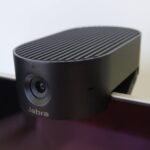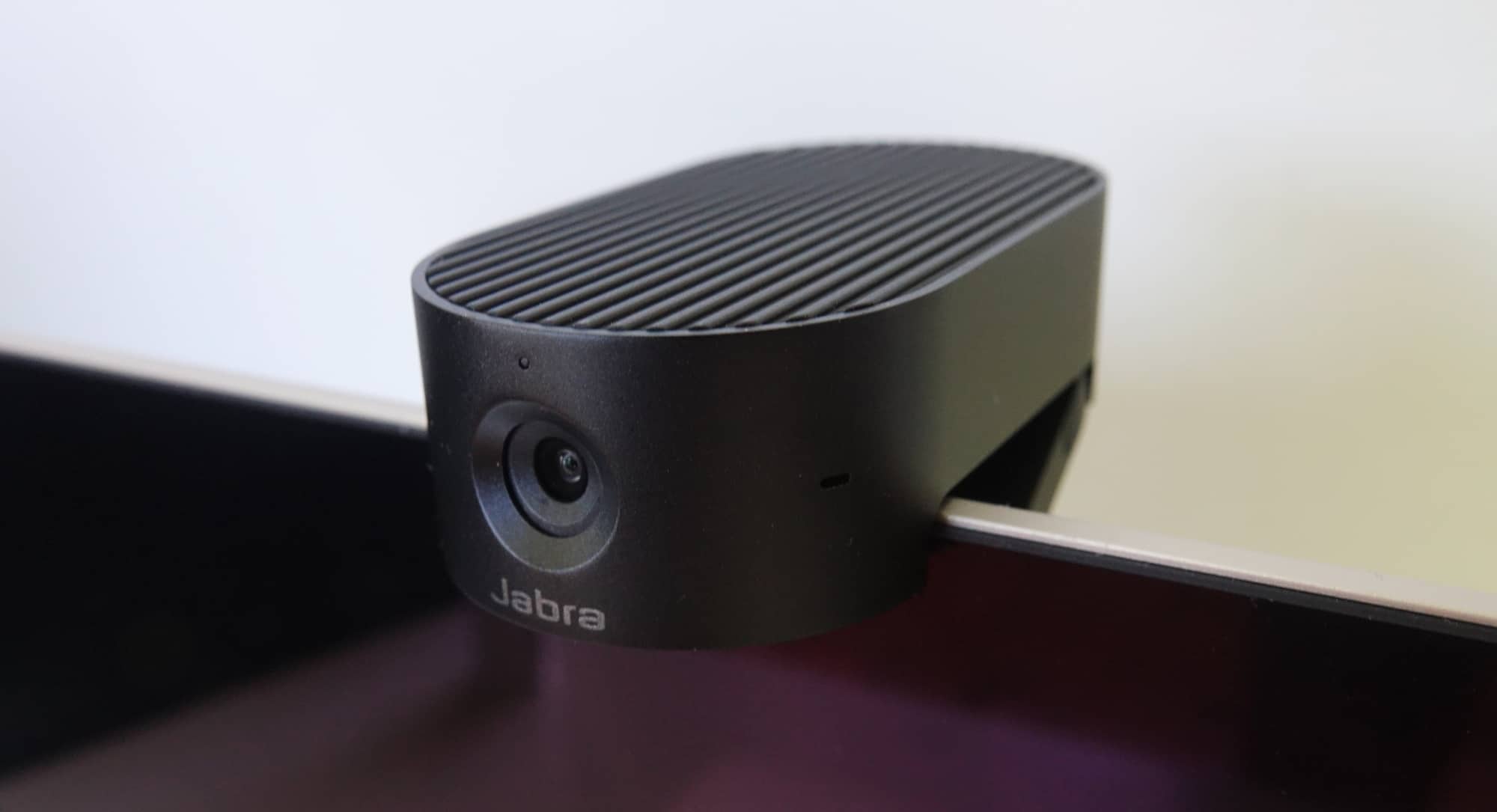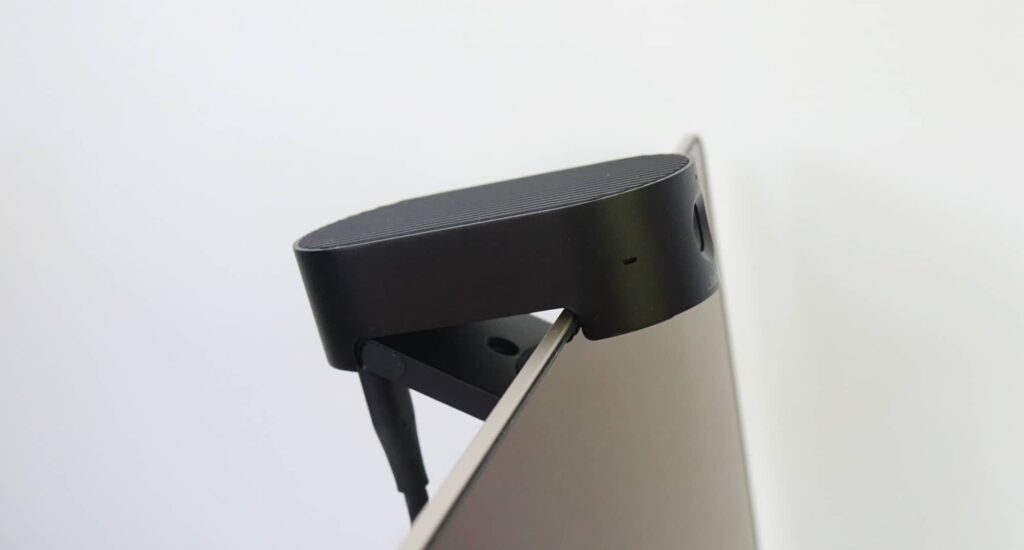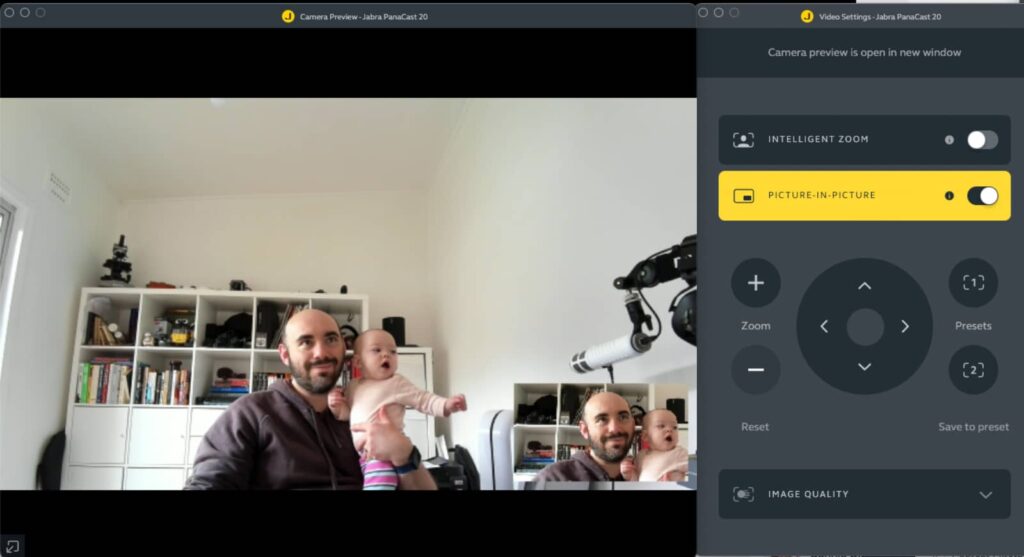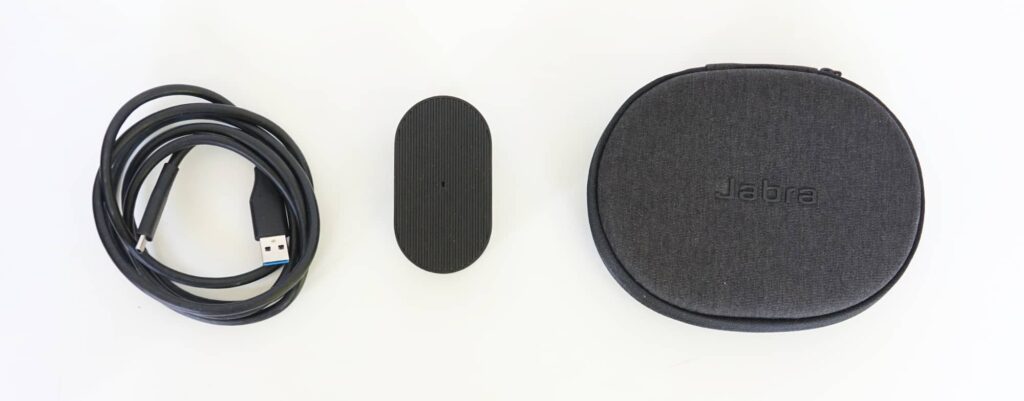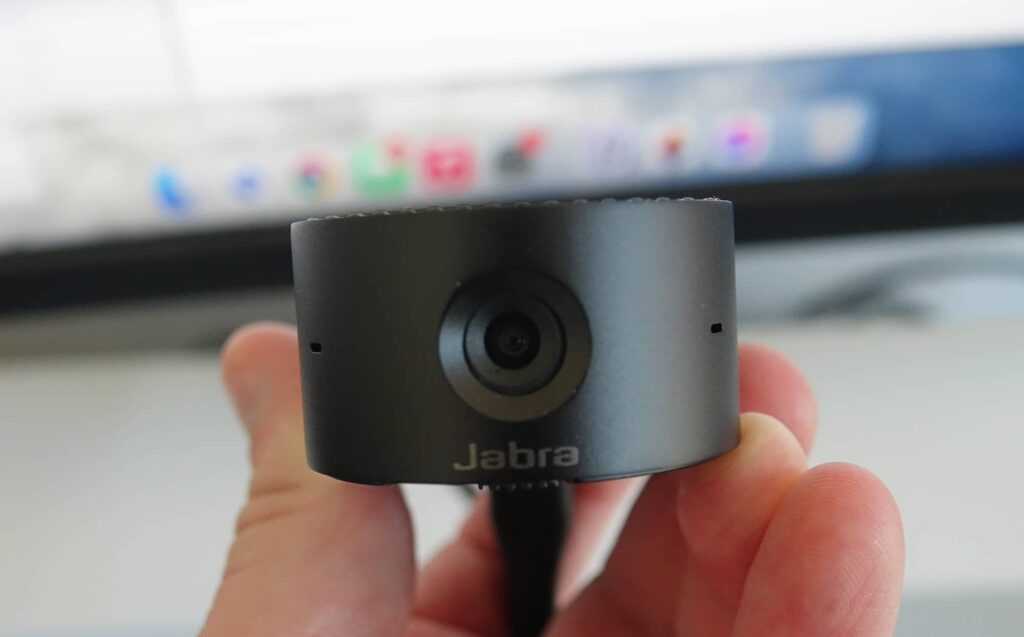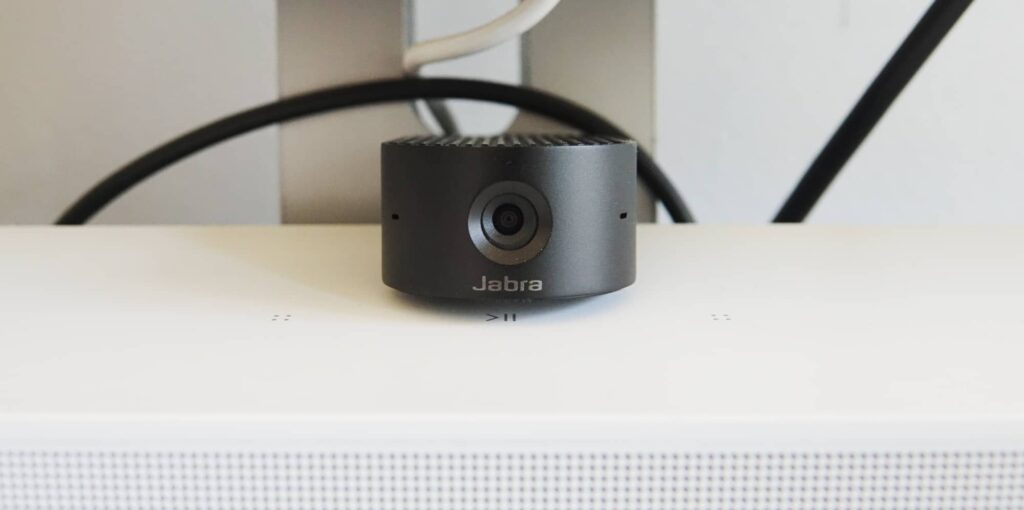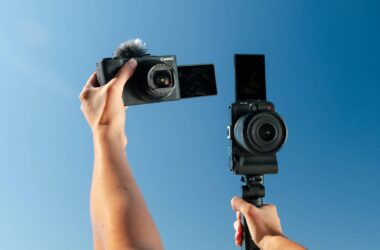Quick review
The good
The not-so-good
A more expensive take on your computer’s webcam, the Panacast 20 gets credit for being compact and capable, but is also very, very expensive.
Living in the work from home world many of us sit in, there’s a pretty solid chance you’re living day-to-day in meetings on your laptop. That’s the norm, even as people start to return to work one or two days a week.
Sitting behind a computer means having a camera trained at your head pretty regularly, though it’s often the one inside your laptop. With laptop webcams being the typical mediocre modules they’ve always been, that could be totally fine, totally acceptable, or an absolute disaster that shames the way you look and where you live.
But it doesn’t have to be that way. You can always replace that camera with something else.
That’s where Jabra’s Panacast 20 comes in, with this sitting in the professional part of the Jabra gadget space, made for workers rather than consumers. It’s like the difference between Jabra’s Elite range for consumers and its Evolve range for the workhorse world, as Jabra splits up offerings for different segments of the market.
What is the Jabra Panacast 20?
The Panacast 20 is a camera for folks doing more than their fair share of WFH, arriving in a 4K camera that can hold onto a screen with some neat software tricks for keeping the camera close and tight on who you are.
It comes with a way to clip onto a monitor for a laptop or desktop, and a little case for storing it.
What does it do?
Take the Panacast 20 out of the box and you’ll find a neat little setup, and one made to travel. There’s a cute little zip-up case reminiscent of what Sony stores its WH-1000XM4 headphones in, only that this one is small and slim and holds a heavy duty camera and a USB A to USB C cable.
The Panacast camera is pretty simple to work out, with a tripod screw mount you can use if you choose, but also a ledge that comes out from the bottom of the camera to sit on the edge of a gadget in your life.
You can use your desktop monitor or your laptop screen, positioning the ledge at an angle to form a grip, or you can even use something else nearby.
For the purpose of this review, we had the Panacast camera sitting on the back of a Sonos Beam soundbar, which we use under a Dell monitor for one of the main speakers in this room.
All you really need to make it work is a ledge or angle of some sort, and it’ll typically hold. From there, you just plug in the Type C cable at out the bottom, and plug that into your computer. There’s a piece of software you can install to control it and update the camera’s firmware, but it’s not needed to use the camera with apps.
Does it do the job?
We spent a good few weeks reviewing the Panacast 20, and found it was a capable little camera, particularly given its excellent 4K resolution taken from a 13 megapixel sensor.
The design was clever, with a neat little ledge that could hold onto a laptop screen or even a larger desktop screen. Jabra’s Panacast 20 also happens to be built quite well, with a robust design and decent heft that feels solid.
All up, it’s a solid little unit, and not just on the outside. Inside, there’s processing power to brighten up the picture, with some AI to provide “intelligent zoom”, which is another way of saying face tracking to zoom in on your visage, while also processing the image on the camera itself, which Jabra says aims to reduce the risk of data breach issues.
There’s also a privacy cover built into the design, which uses a little toggle slider to cover the camera all too easily if you don’t want someone checking out what you’re doing.
What does it need?
It’s a shame Jabra hasn’t included a Type C to Type C cable in the box, and then included a converter from Type C to Type A, or even a converter for the Type A to Type C cable to end in Type C, because right now, if you have a modern laptop, the rectangular Type A cable Jabra includes isn’t going to be a lot of help. Stiff and well made it is, but ending in the new Type C port most laptops use it does not, and so if you only have Type C ports, you’ll need to bring your own converter.
We also wish the zoom wasn’t quite so eager, because at times it can feel like it doesn’t know what it wants.
Sit in front of the Panacast 20 and you may find it’ll zoom on you perfectly, but then you can hold up a phone to show someone something, and it’ll mess around with the zoom poorly, either missing you or the camera, and generally going all over shop.
The zoom feature is typically fine here, but can also go awry at times, and throughout our testing, we just typically preferred to switch it off. It was just better that way.
That’s not really the biggest problem with the Panacast 20, though.
Is the Jabra Panacast 20 worth your money?
No, the biggest problem is the price, because at $559 in Australia, it is not a cheap replacement for your laptop’s web camera.
Yes, it’s a 4K camera and yes, it’s very well built. But it also costs close to an eye-watering $600, or a little less if you look at street pricing, which ranges from $289 and $369. Either way, the camera is not inexpensive.
If you can find it at street pricing, it’ll make a lot more sense value-wise than at Jabra’s over $500 price.
Yay or nay?
Despite that eye-watering price, the Panacast 20 is a very good camera, and ideal for people who yearn for better quality in the video chats, meetings, conferences, and hangouts.
We love that you can quickly upgrade your computer’s camera, Mac or PC, and even take it with you, thanks to that included case, which is a handy inclusion.
While 4K, the Jabra Panacast 20 won’t always be as good as other cameras, and if you have a recent Mac, you may find Centre Stage with the FaceTime HD camera does a better job than what Jabra delivers.
Understandably, there will be hits and misses, but if you have a mediocre webcam on your laptop and need a great update — and don’t mind paying for it — this may as well be it. And if you keep your laptop shut and need a decent webcam, this could be it. It’s a better webcam for big money, but you’ll need to be comfortable spending that big money, too.
